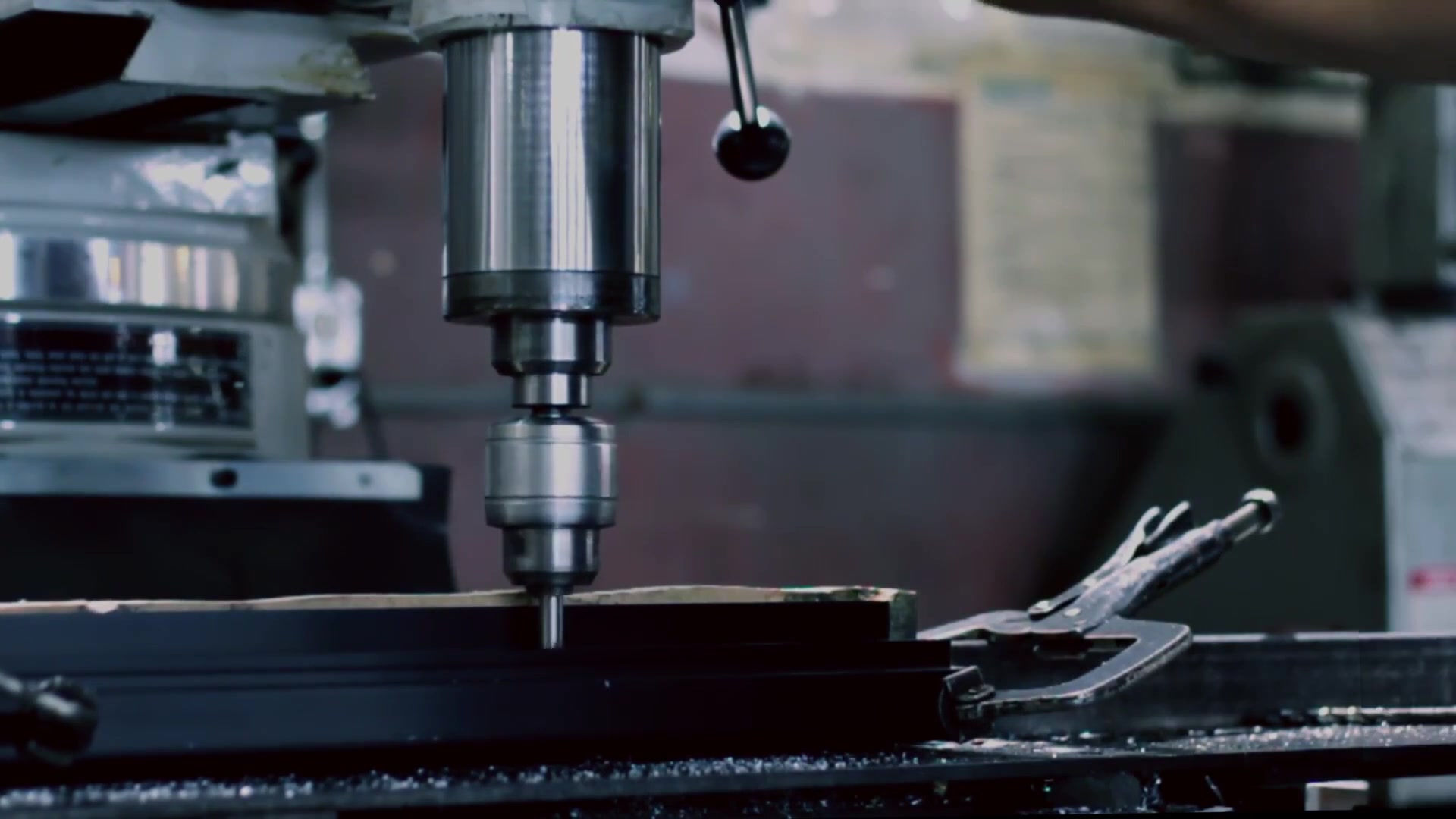


Global Custom Manufacturer, Integrator, Consolidator, Outsourcing Partner for a Wide Variety of Products & Services.
We are your one-stop source for manufacturing, fabrication, engineering, consolidation, integration, outsourcing of custom manufactured and off-shelf products & services. We also private label / white label your products with your brand name if you wish.
Choose your Language
-
Custom Manufacturing of Parts, Components, Assemblies, Finished Products, Machines and Industrial Equipment
-
Domestic & Global Contract Manufacturing
-
Manufacturing Outsourcing
-
Domestic, Global Procurement of Industrial Products
-
Private labeling / White Labeling your Products with your Brand Name
-
Product Finding & Locating Services
-
Global Design and Channel Partnership
-
Engineering Integration
-
Engineering Services
-
Global Consolidation, Warehousing, Logistics
In ELECTRON-BEAM MACHINING (EBM) we have high-velocity electrons concentrated into a narrow beam which are directed toward the work piece, creating heat and vaporizing the material. Thus EBM is a kind of HIGH-ENERGY-BEAM MACHINING technique. Electron-Beam Machining (EBM) can be used for very accurate cutting or boring of a variety of metals. Surface finish is better and kerf width is narrower in comparison to other thermal-cutting processes. The electron beams in EBM-Machining equipment are generated in an electron beam gun. The applications of Electron-Beam Machining are similar to those of Laser-Beam Machining, except that EBM requires a good vacuum. Thus these two processes are classified as electro-optical-thermal processes. The workpiece to be machined with EBM process is located under the electron beam and is kept under vacuum. The electron beam guns in our EBM machines are also provided with illumination systems and telescopes for alignment of the beam with the workpiece. Workpiece is mounted on a CNC table so that holes of any shape can be machined using the CNC control and beam deflection functionality of the gun. To achieve the fast evaporation of the material, the planar density of the power in the beam must be as high as possible. Values up to 10exp7 W/mm2 can be achieved at the spot of impact. The electrons transfer their kinetic energy into heat in a very small area, and the material impacted by the beam is evaporated in a very short time. The molten material at the top of the front, is expelled from the cutting zone by the high vapor pressure at the lower parts. EBM equipment is built similarly to electron beam welding machines. Electron-beam machines usually utilize voltages in the range of 50 to 200 kV to accelerate electrons to about 50 to 80% of the speed of light (200,000 km/s). Magnetic lenses whose function is based on Lorentz forces are used to focus the electron beam to the surface of the workpiece. With the help of a computer, the electromagnetic deflection system positions the beam as needed so holes of any shape can be drilled. In other words, the magnetic lenses in Electron-Beam-Machining equipment shape the beam and reduce the divergence. Apertures on the other hand allow only the convergent electrons to pass and capture the divergent low energy electrons from the fringes. The aperture and the magnetic lenses in EBM-Machines thus improve the quality of the electron beam. The gun in EBM is used in pulsed mode. Holes can be drilled in thin sheets using a single pulse. However for thicker plates, multiple pulses would be needed. Switching pulse durations of as low as 50 microseconds to as long as 15 miliseconds are generally used. To minimize electron collisions with air molecules resulting in scattering and keep contamination to a minimum, vacuum is used in EBM. Vacuum is difficult and expensive to produce. Especially obtaining good vacuum within large volumes and chambers is very demanding. Therefore EBM is best suited for small parts that fit into reasonably sized compact vacuum chambers. The level of vacuum within the EBM’s gun is in the order of 10EXP(-4) to 10EXP(-6) Torr. The interaction of the electron beam with the work piece produces X-rays which pose health hazard, and therefore well trained personnel should operate EBM equipment. Generally speaking, EBM-Machining is used for cutting holes as small as 0.001 inch (0.025 millimetre) in diameter and slots as narrow as 0.001 inch in materials up to 0.250 inch (6.25 millimetres) thick. Characteristic length is the diameter over which the beam is active. Electron beam in EBM may have a characteristic length of tens of microns to mm depending on degree of focusing of the beam. Generally, the high-energy focused electron beam is made to impinge on the workpiece with a spot size of 10 – 100 microns. EBM can provide holes of diameters in the range of 100 microns to 2 mm with a depth up to 15 mm, i.e., with a depth/diameter ratio of around 10. In case of defocused electron beams, power densities would drop as low as 1 Watt/mm2. However in case of focused beams the power densities could be increased to tens of kW/mm2. As a comparison, laser beams can be focused over a spot size of 10 – 100 microns with a power density as high as 1 MW/mm2. Electrical discharge typically provides the highest power densities with smaller spot sizes. Beam current is directly related to the number of electrons available in the beam. Beam current in Electron-Beam-Machining can be as low as 200 microamperes to 1 ampere. Increasing the EBM’s beam current and/or pulse duration directly increases the energy per pulse. We use high-energy pulses in excess of 100 J/pulse to machine larger holes on thicker plates. Under normal conditions, EBM-machining offers us the advantage of burr-free products. The process parameters directly affecting the machining characteristics in Electron-Beam-Machining are:
• Acceleration voltage
• Beam current
• Pulse duration
• Energy per pulse
• Power per pulse
• Lens current
• Spot size
• Power density
Some fancy structures can also be obtained using Electron-Beam-Machining. Holes can be tapered along the depth or barrel shaped. By focusing the beam below the surface, reverse tapers can be obtained. A wide range of materials like steel, stainless steel, titanium and nickel super-alloys, aluminum, plastics, ceramics can be machined using e-beam-machining. There could be thermal damages associated with EBM. However, the heat-affected zone is narrow due to short pulse durations in EBM. The heat-affected zones are generally around 20 to 30 microns. Some materials such as aluminum and titanium alloys are more readily machined compared to steel. Furthermore EBM-machining does not involve cutting forces on the work pieces. This enables machining of fragile and brittle materials by EBM without any significant clamping or attaching as is the case in mechanical machining techniques. Holes can also be drilled at very shallow angles like 20 to 30 degrees.
The advantages of Electron-Beam-Machining: EBM provides very high drilling rates when small holes with high aspect ratio are drilled. EBM can machine almost any material regardless of its mechanical properties. No mechanical cutting forces are involved, thus work clamping, holding and fixturing costs are ignorable, and fragile/brittle materials can be processed without problems. Heat affected zones in EBM are small because of shorte pulses. EBM is able of providing any shape of holes with accuracy by using electromagnetic coils to deflect electron beams and the CNC table.
The disadvantages of Electron-Beam-Machining: Equipment is expensive and operating and maintaining vacuum systems requires specialized technicians. EBM requires significant vacuum pump down periods for attaining required low pressures. Even though heat affected zone is small in EBM, the recast layer formation occurs frequently. Our many years of experience and know-how helps us to take advantage of this valuable equipment in our manufacturing environment.
